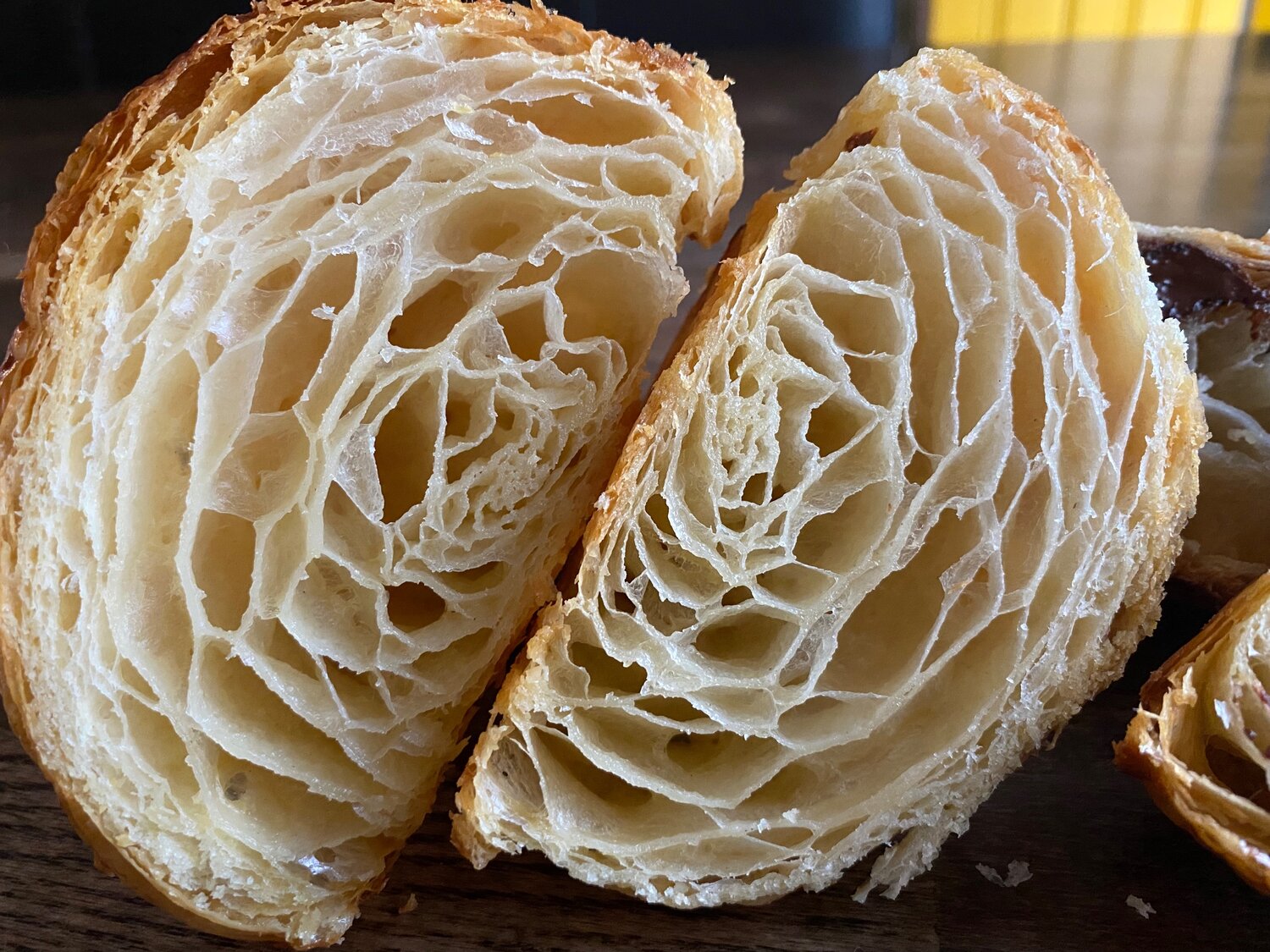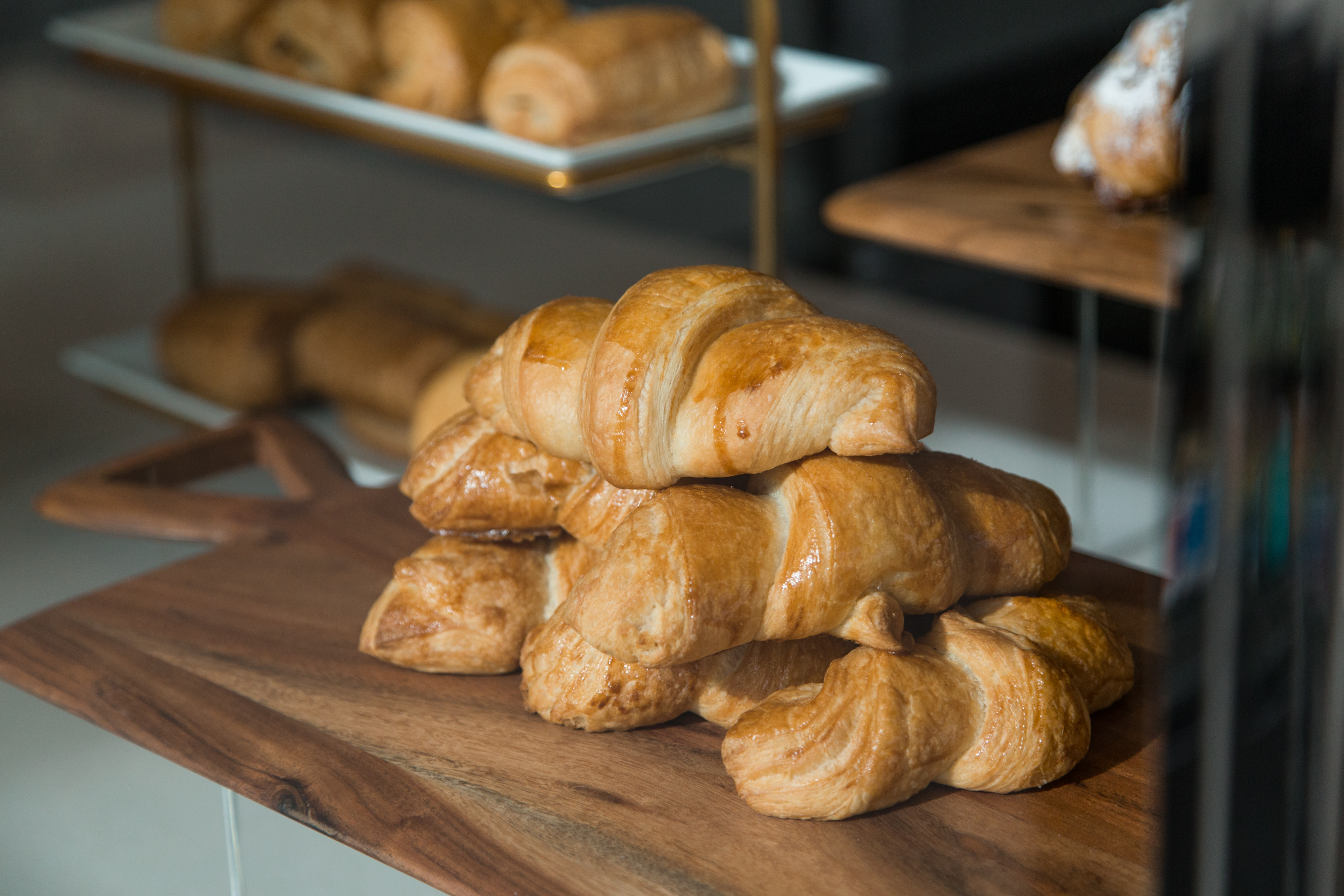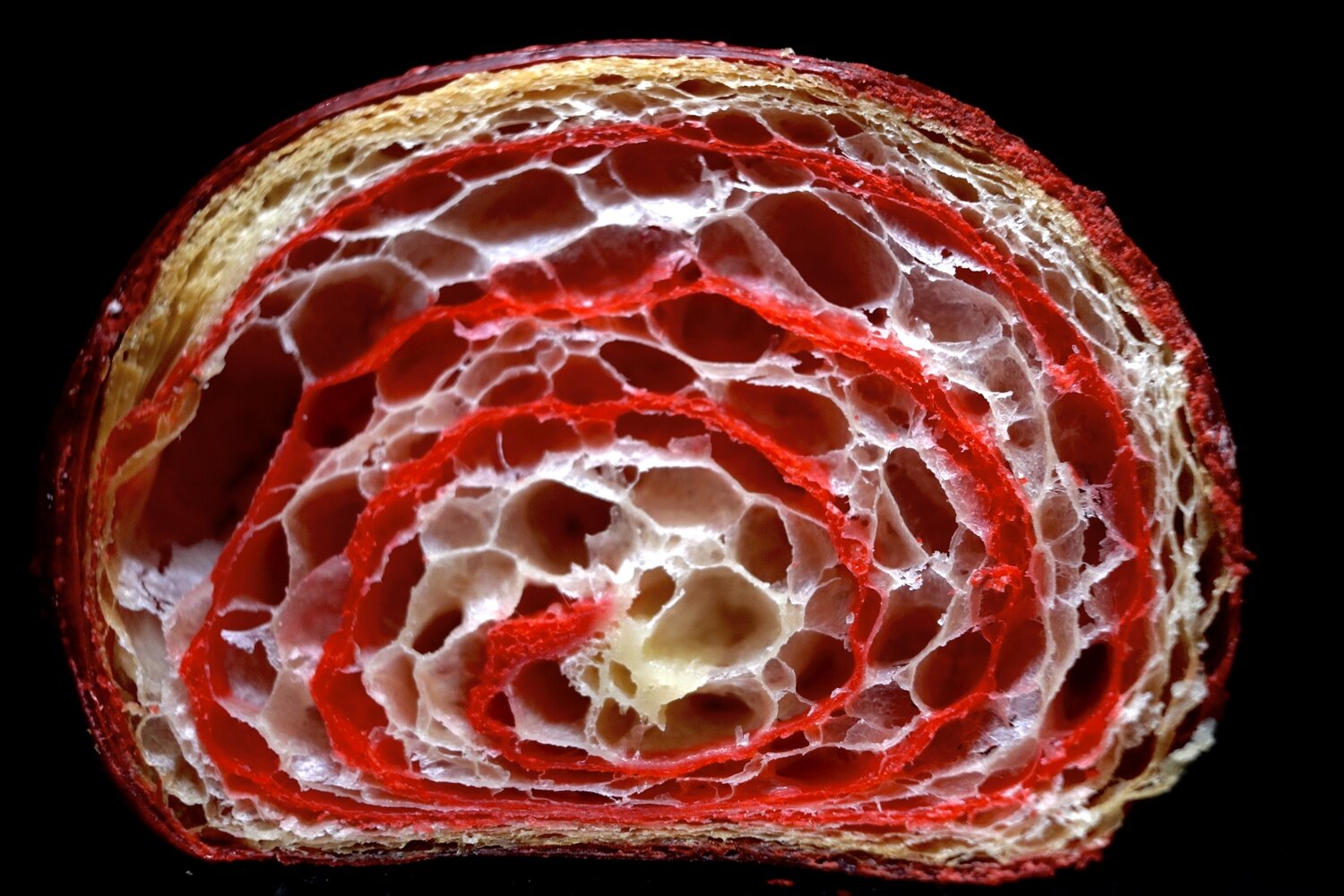Finding a truly wonderful croissant in Denver, or anywhere for that matter, can feel like a special quest. That, is that, moment when you bite into something truly exceptional, something that makes all the effort of finding it, or even making it, completely worth it. A good croissant, you know, offers a very unique kind of joy, a quiet moment of bliss that starts your day off just right. It is, more or less, a small luxury that many people truly appreciate.
A croissant, it is said, comes from a French tradition. It is a viennoiserie, shaped like a crescent, made from a special kind of dough. This dough is a laminated yeast dough, which sits somewhere between a typical bread and a puff pastry. This particular way of making the dough, you see, gives it its very famous layers. It is a pastry that, in some respects, has captured hearts all over the globe, and Denver is certainly no exception to that.
Whether you are someone who loves to visit local bakeries for your morning treat, or you are perhaps, a bit of a home baking enthusiast, this guide aims to help you explore the world of this beloved pastry right here in Denver. We will look at what makes these pastries so special, and how you can enjoy them, whether by finding them ready-made or by trying your hand at baking them yourself. It is, after all, about enjoying that delicately flaky French pastry.
Table of Contents
- What Makes a Croissant a True Delight?
- The Art of the Laminated Dough
- Finding Your Perfect Croissant in Denver
- The Joy of Baking Croissants at Home
- Tips for Denver Home Bakers
- Beyond the Classic: Croissant Fillings
- Frequently Asked Questions About Croissants
What Makes a Croissant a True Delight?
When you think about a croissant, you might, like your, immediately picture its signature shape. But what truly sets it apart, you know, goes far beyond just how it looks. A really good croissant, you see, is a multi-sensory experience. It has a crisp, flaky outer layer that shatters gently when you take a bite. Then, inside, it is soft and fluffy, offering a wonderful contrast in textures. This combination, it's almost, what makes it so incredibly satisfying.
The taste is also very important. A quality croissant is filled with rich, buttery goodness. This comes from the layers of butter folded into the dough, which melt and create steam during baking. This process, basically, is what makes those beautiful, airy pockets inside. It is a pastry that, quite frankly, offers a taste that is both comforting and sophisticated, making it a perfect treat for any time of day, from breakfast to an afternoon snack.
Many people describe these homemade croissants as warm, buttery, and extra flaky. They are a classic French pastry, you know, with beautiful, flaky, tender layers. This labor of love, as some call it, is soft and fluffy on the inside with a buttery, flaky crust on the outside. It is, sort of, the ideal outcome of a well-made pastry, something that really captures the essence of what a croissant should be.
The Art of the Laminated Dough
The secret to a croissant's amazing texture, it's pretty much, all in the dough. This is a laminated yeast dough, which means layers of butter are folded into the dough repeatedly. This process, you know, is called laminating. It takes patience and effort, but the results are totally worth it! It is, arguably, the most important part of making a croissant, and it requires a careful hand.
To create these layers, you basically, roll out the dough, place a slab of butter on it, fold the dough over, and then roll it out again. This is repeated several times, with periods of chilling in between. This chilling, as a matter of fact, is crucial because it keeps the butter from melting into the dough too soon. Each fold creates more layers, and these layers, when baked, separate to give the croissant its characteristic flakiness.
Set aside time for this laminated dough, as it is a process that cannot be rushed. With a pastry as technical as croissants, some aspects of the process, you know, need careful attention. The precise folding and chilling steps are what build those delicate, tender layers that everyone loves. It is, to be honest, a true craft, and mastering it brings a great sense of accomplishment.
Finding Your Perfect Croissant in Denver
For many people, the simplest way to enjoy that delicately flaky French pastry known as a croissant is to stop by your local bakery and pick up a few. Denver, you know, has a growing number of wonderful bakeries that offer a variety of these delightful treats. Finding your favorite spot can be a fun adventure, a bit like a treasure hunt for your taste buds.
When you are looking for a good croissant in Denver, consider a few things. You might want to look for bakeries that specialize in French pastries, as they often have the expertise in laminated dough. The aroma alone, you know, can tell you a lot about the freshness and quality of what they offer. A warm, buttery scent filling the air is always a good sign, naturally.
Many people, sort of, have their go-to spot for a morning pastry. These places often bake their croissants fresh every day, ensuring that crisp, flaky goodness. The experience of walking into a bakery, seeing the golden-brown pastries, and choosing your perfect one is, arguably, part of the charm. It is a small ritual that brings a lot of happiness to many people in the city, and stuff.
The Joy of Baking Croissants at Home
The road less traveled, when it comes to croissants, is making them yourself. This homemade approach can be incredibly rewarding. Here's your complete recipe guide for how to make croissants from scratch. It is a process that requires some time and care, but the satisfaction of pulling warm, buttery, and extra flaky pastries from your own oven is truly unmatched, seriously.
Making our baker's croissants recipe with King Arthur Baking Company, for example, can give you a good starting point. This simplified croissant recipe will have you baking croissants like a pro. It is designed to make the process more approachable, so you can achieve those flaky, buttery, and deliciously authentic results, yet so easy to make! It is, basically, about following the steps carefully.
This labor of love is soft and fluffy on the inside with a buttery flaky crust on the outside. It is a truly classic French pastry with beautiful flaky tender layers. The process of making the laminated dough, the folding, the chilling, and then watching them puff up in the oven, is, in a way, a very satisfying creative endeavor. It is a tangible result of your effort, and that feels pretty good, you know.
To bake them, you typically, spritz a preheated 425-degree F oven with water, close the door, and get the croissants ready. Place the croissants in the oven and spritz again, close the door and turn the oven down to 400 degrees F. This initial burst of steam, actually, helps the layers expand and become extra crisp. It is a small step that makes a big difference in the final texture, honestly.
Tips for Denver Home Bakers
Baking at Denver's altitude can present some unique challenges, even for something like croissants. The lower atmospheric pressure means doughs tend to rise faster, and moisture evaporates more quickly. This means, you know, that some adjustments might be needed to your recipe for the best results.
For instance, you might find that your dough needs a little less yeast, or that it proves (rises) more quickly than a recipe written for sea level. It is also, you know, a good idea to pay attention to the hydration of your dough; you might need to add a touch more liquid to compensate for the faster evaporation. These small tweaks, you see, can make a big difference in achieving that perfect flaky texture here in the Mile High City.
Also, when baking, the oven temperature might need a slight adjustment. Sometimes, baking at a slightly lower temperature for a bit longer can help ensure even cooking and prevent the outside from browning too quickly while the inside is still raw. It is, perhaps, a matter of experimentation to find what works best with your specific oven and recipe at this altitude. Patience, as I was saying, is key, and the results are totally worth it!
Beyond the Classic: Croissant Fillings
While the plain, buttery croissant is a thing of beauty all on its own, there are many ways to enjoy this pastry with added flavors. You can fill croissants with ham and cheese for a savory treat. This combination, basically, makes a wonderful light meal or a hearty snack. The salty ham and melted cheese pair very well with the rich, buttery pastry, creating a very satisfying bite.
Spinach is another popular savory filling, often combined with feta or other cheeses. This offers a different flavor profile, a bit earthy and fresh. It is, to be honest, a great way to enjoy a croissant if you prefer something less sweet. These savory options are, in some respects, a delightful change from the traditional breakfast pastry.
For those who love chocolate, you can use our pain au chocolat sticks for a special treat. A pain au chocolat, you know, is essentially a croissant dough wrapped around pieces of dark chocolate. The chocolate melts inside the warm pastry, creating a gooey, delicious center. It is, sort of, a classic variation that is loved by many, offering a sweet indulgence. Learn more about croissants on our site, and link to this page for more pastry tips.
Frequently Asked Questions About Croissants
Where can I find the best croissants in Denver?
To find the best croissants in Denver, you know, it is often a good idea to explore local, independent bakeries. Many smaller establishments, actually, put a lot of care into their French pastries. Look for places with a strong aroma of fresh butter and baking, and perhaps, check online reviews or ask locals for their favorite spots. It is, basically, about seeking out those places that pride themselves on traditional baking methods. You might find your new favorite spot just around the corner, or something.
What makes a croissant flaky?
The flakiness of a croissant, it's pretty much, due to the process of lamination. This involves repeatedly folding thin layers of butter into the dough. As the croissant bakes, the butter melts and creates steam, which then separates the layers of dough. This separation, you know, is what forms those characteristic airy pockets and the crisp, tender texture that everyone loves. It is, quite frankly, a very precise technique that takes practice to perfect.
Can I make croissants at home in Denver's altitude?
Yes, you can certainly make croissants at home in Denver's altitude, though you might need to make some small adjustments to your recipe. The lower atmospheric pressure here means doughs tend to rise faster, and moisture can evaporate more quickly. You might need to slightly reduce the amount of yeast or add a bit more liquid to your dough. Also, sometimes, a slight adjustment to baking time or temperature helps achieve the best results. It is, in a way, a bit of an experiment, but very rewarding when you get it right.
To enjoy that delicately flaky French pastry known as a croissant, you have two options: stopping by your local bakery and picking up a few, or the road less traveled—making them yourself. Crisp, flaky, and filled with rich buttery goodness, this French pastry is one of the most blissful things you can treat yourself to any time, any day, from breakfast to afternoon. These homemade croissants are a classic French pastry with beautiful flaky tender layers. This labor of love is soft and fluffy on the inside with a buttery flaky crust on the outside. So, whether you buy them or bake them, enjoy every single bite.
For more detailed baking information, consider visiting King Arthur Baking Company, a trusted resource for bakers.



